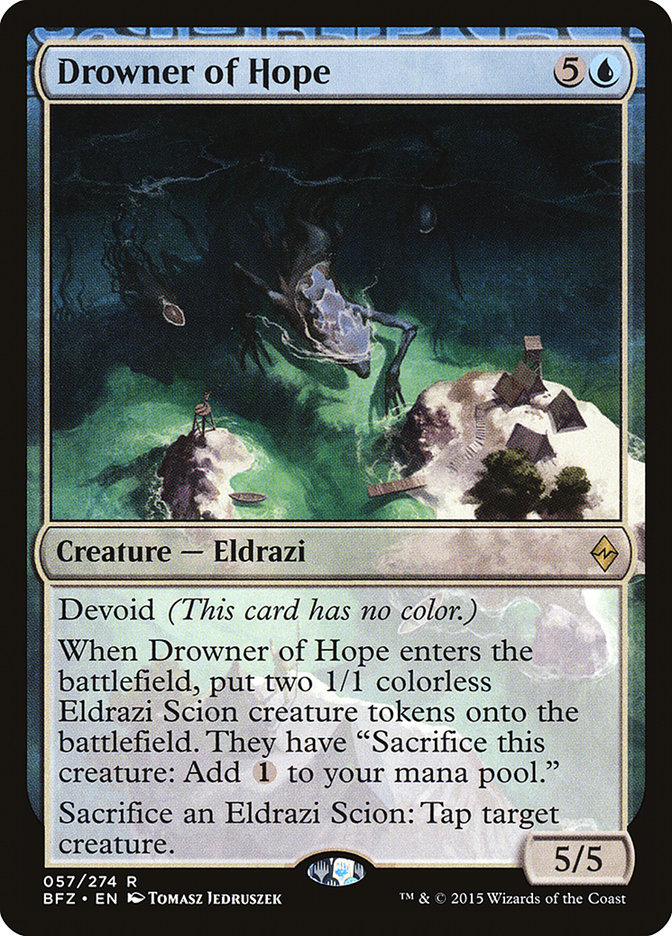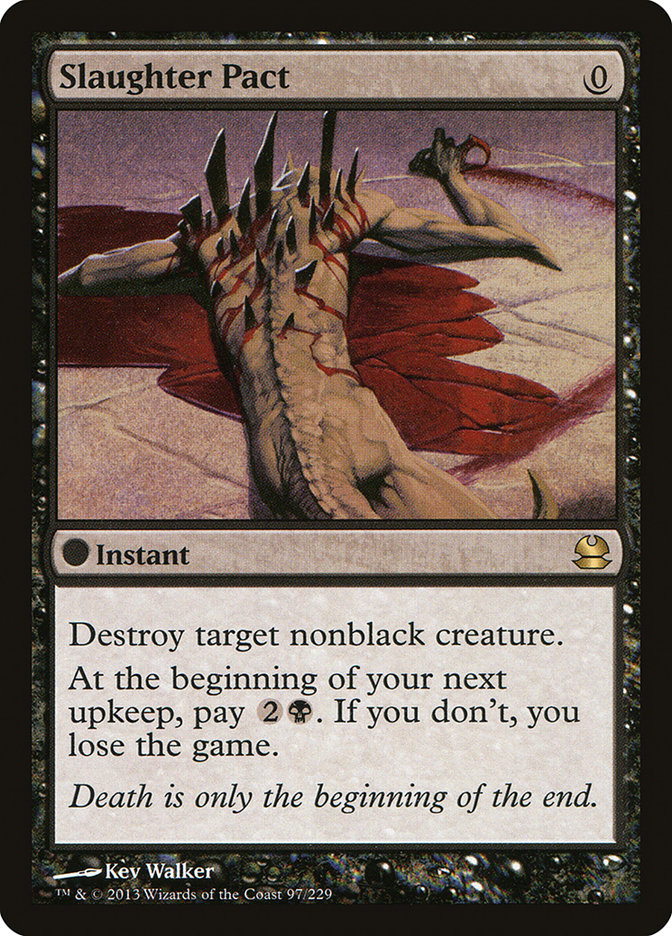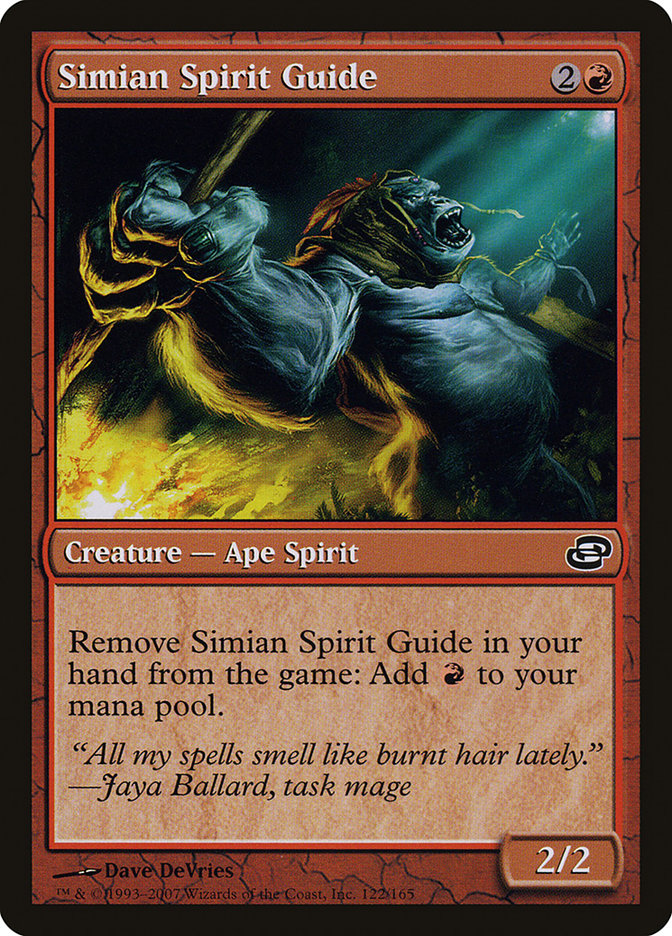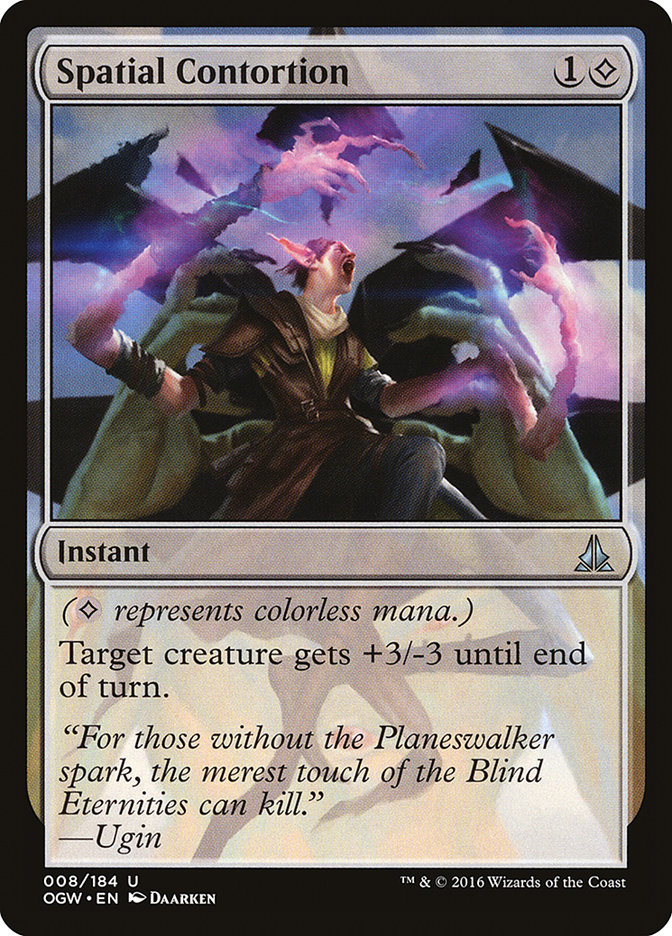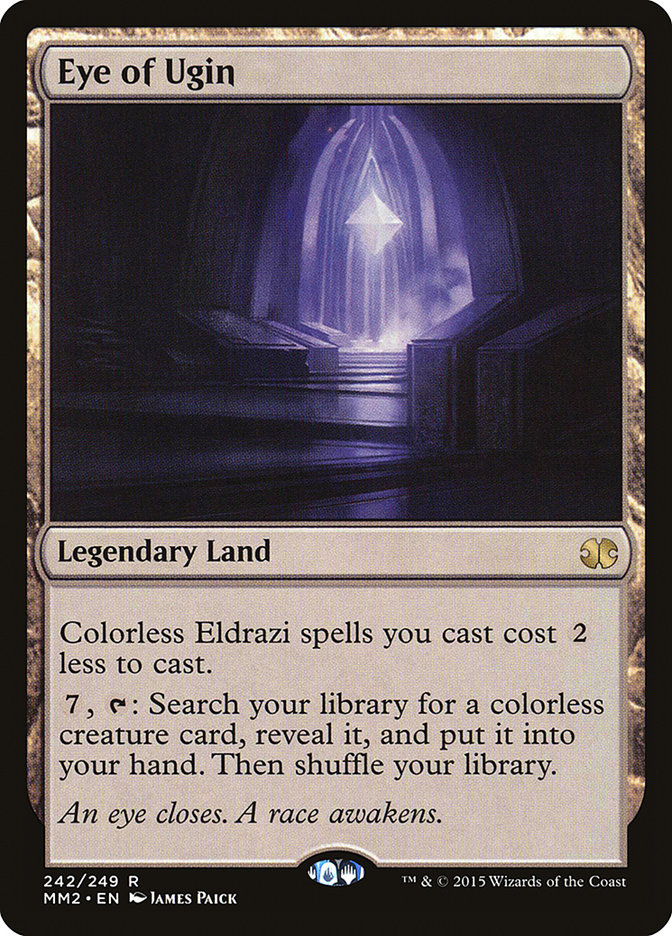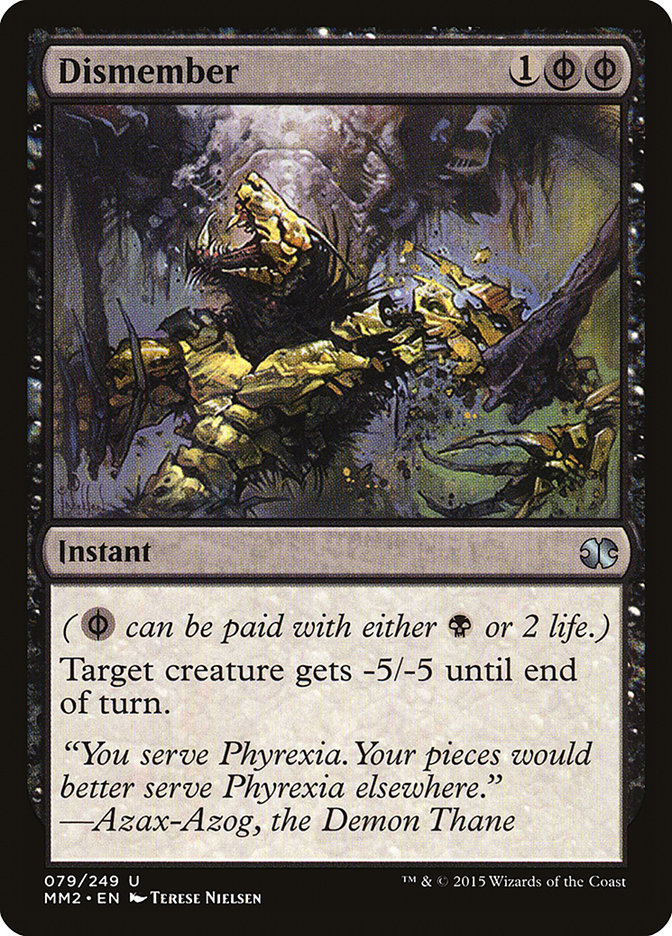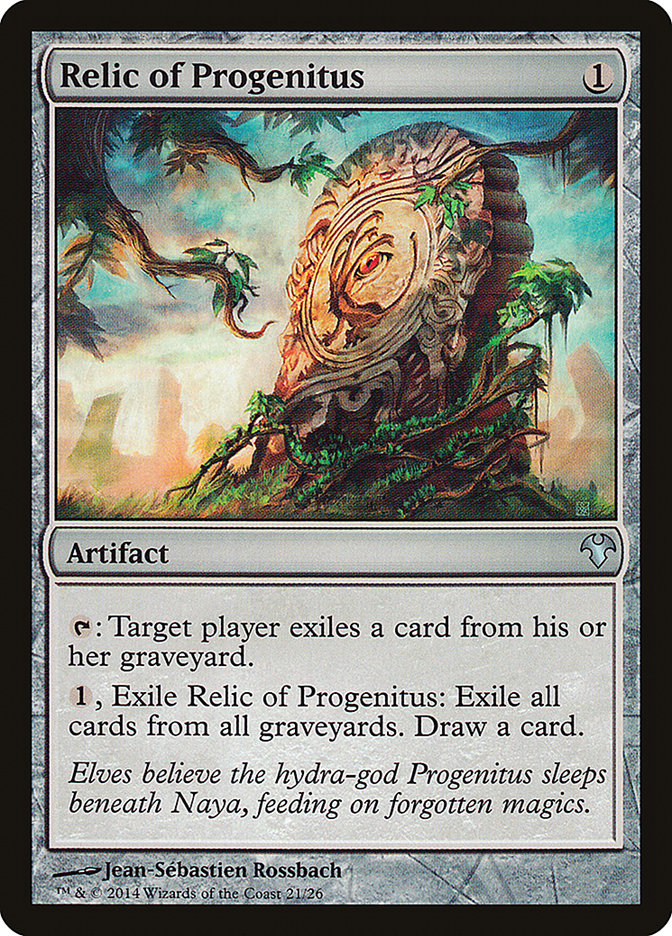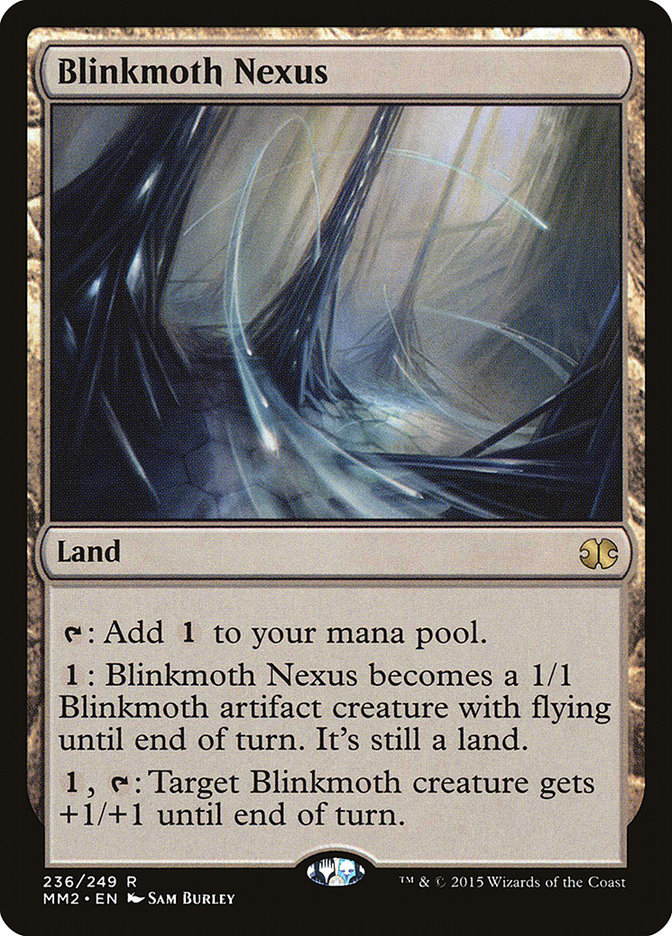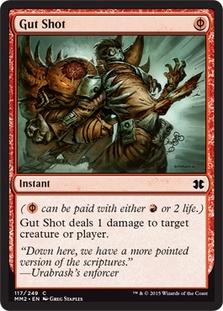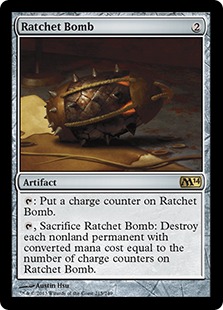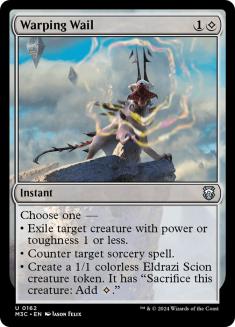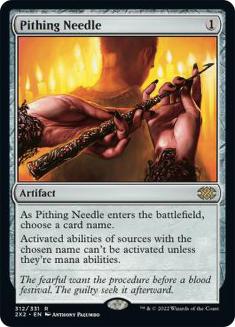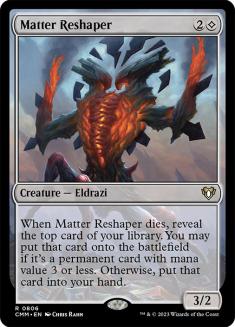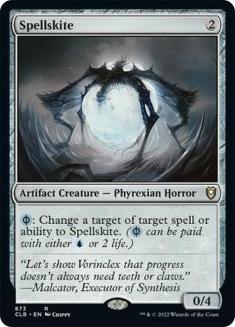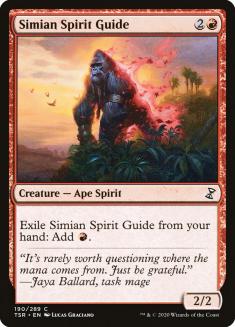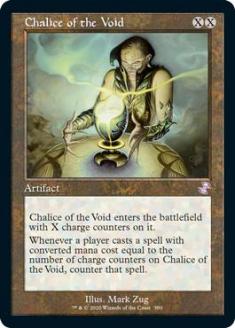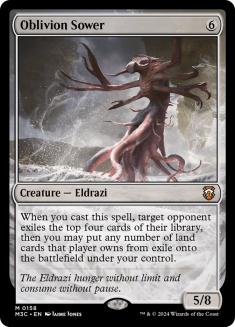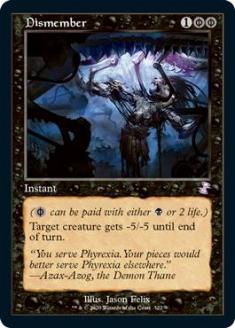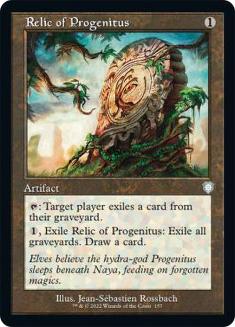Pro Tour Oath of the Gatewatch has come and gone, and left in its wake is the Modern format we used to know. Eldrazi flat-out dominated this Pro Tour and I was fortunate enough to have been able to play and work on this deck with an incredible team (CFB/FtF). Many have compared the performance of the deck to that of Caw-Blade, a deck known for completely destroying Pro Tour Paris in 2011. This may be a fair comparison, considering I finished 23rd in Pro Tour Oath of the Gatewatch but only tenth-best on my team.
Creatures (26)
- 4 Simian Spirit Guide
- 2 Spellskite
- 4 Endless One
- 4 Eldrazi Mimic
- 4 Reality Smasher
- 4 Thought-Knot Seer
- 4 Matter Reshaper
Lands (24)
Spells (10)
Sideboard

This was an interesting Pro Tour to prepare for. First, Modern is generally a known quantity and new sets add little most of the time. The format is usually shaken up by a series of bans or unbans and this time it was no different. Wizards dropped the banhammer on both Summer Bloom and Splinter Twin in an effort to shake up the format.
This would have been enough to make things interesting and I think would have led to a very diverse field at the Pro Tour. That wasn’t the end of the shake-up, however. Usually, the newest set hardly plays a major role in such a large format. We may get a card that pushes its way through to create or improve upon Tier 1 decks, such as Become Immense for Infect or Eidolon of the Great Revel for Burn, but Modern is usually a collection of the same decks shifting around slightly in popularity.
Oath of the Gatewatch laid out a perfect mana curve of Eldrazi creatures to play with in Eldrazi Mimic, Matter Reshaper, Thought-Knot Seer, and Reality Smasher. These were the major standouts in the spoiler, and my team and I wanted to find out just as far we could push this theme alongside Eye of Ugin and Eldrazi Temple.
The Process
We went down many paths before landing on the final decklist. We tried a higher-curve B/W version with Blight Herder and Ulamog, the Ceaseless Hunger. This was the most popular version before the inclusions of Oath of the Gatewatch. B/W Eldrazi was great against midrange decks but was weaker to the rest of the field. We quickly dismissed this option and moved to the core of twenty Eldrazi creatures we eventually ended up playing. Also making an appearance was Drowner of Hope, but still playing a black splash for removal such as Doom Blade and Slaughter Pact in addition to a few discard spells such as Inquisition of Kozilek and Thoughtseize.
The core of creatures was powerful in this iteration and Drowner of Hope did seem to solve some problems against Abzan and Jund by being able to tap down Tarmogoyf, Siege Rhino, or Tasigur, the Golden Fang in a creature stall. Ultimately the mana just wasn’t consistent enough with just Tendo Ice Bridge and Underground River alongside Urborg, Tomb of Yawgmoth and some basic lands.
Tendo Ice Bridge just wasn’t the answer. Often I would want to tap my colored source multiple times and Tendo Ice Bridge didn’t provide this option. We then tried a B/G version of the deck with Ancient Stirrings to add some consistency to having our Eldrazi lands early and be able to search for a threat later. Ancient Stirrings slowed down the deck, however. The best draws are when you can naturally curve your threats and use Thought-Knot Seer as a disruptive measure, leaving enough time to win before the opponent can piece together a plan. Playing Ancient Stirrings on turn 1 implies you are not playing an Eldrazi land on turn 1, ultimately slowing the deck down a full turn.
So if colored spells are an issue, why don’t we just maximize the utility lands such as Ghost Quarter and maybe add some creature-lands to our deck? This is where the colorless version was brought to life. Jacob Wilson suggested we play Simian Spirit Guide as a way to enable more explosive starts.
We soon realized a colorless shell with Simian Spirit Guide had some real potential, despite how strange it seemed on the surface. We began to focus our attention on the colorless version almost immediately. We went from thirteen players tuning a variety of different stock decks to focusing all of our attention on improving the Colorless Eldrazi deck. The original list had only two copies of Dismember and a few Spatial Contortion, but the issue of leading with an Eye of Ugin on turn 1 and then wanting to cast a Spatial Contortion on turn 2 made the already-weak removal spell much weaker. This led us to four Dismember, which cost us some percentage points against Burn or Zoo strategies but interacted quite nicely with the Simian Spirit Guides we added.
We referred to this combination of cards as a “creature Force of Will.” The interaction really shined in matchups like Infect, Affinity, and any Temur Battle Rage-based decks (like Death’s Shadow Zoo). An unaware opponent would move in for the win with an Arcbound Ravager or Become Immense on a creature for lethal damage or poison while the Eldrazi pilot was tapped out, only to be met by a Dismember cast off of the mana generated by the ape.
At this point we are set on 28 cards, so how do we fill out the rest of the deck? With Simian Spirit Guides in our deck, we don’t want to play too many lands, or else we would be prone to flooding out often, so we have to find some potential colorless cards to fill out the deck and improve our matchups.
From talking with other competitors who worked on similar Eldrazi decks but couldn’t quite get them where they wanted, these last eight or so slots were where their decks fell apart. To fill these slots we first had to acknowledge the anticipated metagame. We expected Infect, Burn, Zoo, Abzan, Tron, Storm, Living End, and Affinity to be some of the more represented strategies at the Pro Tour. A quick Gatherer search done by Sam Pardee gave him the idea of maindecking Chalice of the Void. This is when skeptics of the deck, including finalist Ivan Floch, turned into believers.
Creatures (26)
- 4 Simian Spirit Guide
- 2 Spellskite
- 4 Endless One
- 4 Eldrazi Mimic
- 4 Reality Smasher
- 4 Thought-Knot Seer
- 4 Matter Reshaper
Lands (24)
Spells (10)
Sideboard

Chalice of the Void in conjunction with Simian Spirit Guide gave the deck the ability to lock out or at least drastically slow down any of the hyper-fast starts most of the Modern decks had to offer. Chalice of the Void also plays nicely with Eldrazi creatures because their mana cost is high but drastically reduced by the Eldrazi lands. The only one-mana spells in the deck were Dismembers, which conveniently are unaffected because of their Phyrexian mana cost. Playing a turn 2 or 3 Chalice of the Void against a deck like Infect or Burn is also effective enough to steal some games by clogging their hand with uncastable spells. In other words, Chalice was effective when drawn with or without Simian Spirit Guide. After playing with Chalice of the Void in the maindeck for about a day, we knew we were close to something special. Our matchups went from close to highly favorable against our anticipated metagame.
Chalice of the Void, however, is weak against Abzan and Jund strategies. They have Abrupt Decay, which is generally a weak card against you, and their mana costs are pretty evenly spread. Chalice of the Void is also a blank against other Eldrazi aggro decks but could shut off Path to Exile, Relic of Progenitus, and discard spells against the midrange versions.
After the inclusion of Chalice of the Void, we still had four spots left in the deck if we wanted to include 24 lands. Because 24 lands is relatively high in a deck with four Simian Spirit Guide, it was important to include some high-impact lands in addition to the Eldrazi lands. We first tested the creature-lands that we eventually ended up playing. Blinkmoth Nexus proved to be more useful than Mutavault because having a flying blocker was important against Affinity and Infect decks. We removed Mutavaults for a while, trying out various lands such as Tectonic Edge and Sea Gate Wreckage. After some assessment, we determined that Mutavault was just more on-plan, allowing us to get aggressive.
It helps that Mutavault plays well with Blinkmoth Nexus. Ghost Quarter was a must-include because of a potential uptick in G/R Tron decks. That left us with a decision on which basics, if any, to play. We tried one Wastes to start and soon realized it solved a lot of problems with Blood Moon as well as Ghost Quarter and Path to Exile, both of which can happen multiple times, so we added a second Wastes. In the future, it may be correct to add another Wastes over a Mutavault or Urborg, Tomb of Yawgmoth to combat an uptick in potential Blood Moons being played.
Now we had these last four maindeck slots to fill. This was the most difficult decision. We toyed with a few ideas for a bit: Warping Wail, Oblivion Sower, even Mishra’s Bauble because of its interaction with Chalice of the Void. By using it on turn 1 you could make an educated guess on their deck and decide if you wanted to play a Chalice for one with a Simian Spirit Guide, hold it for a higher number, or even play it for zero against Affinity or Living End. The way the metagame seemed to shape up, we decided to include Ratchet Bomb and Spellskite. Both played well against the faster decks like Affinity, Burn, and Infect. Ratchet Bomb is certainly slow, in fact Ratchet Bomb is glacial, but it solved some of the deck’s problems against tough-to-deal-with permanents and against explosive Affinity starts.
The Sideboard
It was a lot of work to get the sideboard to where it was for the tournament. These are the plans we eventually settled on.
Affinity:
In:
Out:
(On the play)
(On the draw)
The plan is to use efficiently costed removal such as Gut Shot and Dismember to gain a tempo advantage and keep from taking large Cranial Plating hits while also deploying threats and racing. Steel Overseer can get out of hand if left unchecked, so make sure to prioritize killing it. Chalice of the Void comes out on the draw because its most useful on zero to shut out their explosive starts involving Mox Opal and zero-mana creatures. Siman Spirit Guide is better on the draw because it helps you be proactive with creatures but also allows you to play a Ratchet Bomb on turn 1 that might otherwise be too slow.
G/R Tron:
In:
Out:
Sideboarding against this deck is a real “best of the bad” situation. None of your sideboard cards are that high-impact. This is, however, by design. The matchup is so good that it isn’t really necessary to use many slots on this matchup. We are bringing in Oblivion Sowers here as additional pressure which also gives us an opportunity to snag one of their Ghost Quarters to keep them off Tron lands.
The most difficult card to beat out of the Tron deck is Wurmcoil Engine. Act of Aggression is a card we considered for this matchup which almost assuredly would lead to a victory whenever drawn, as it can steal both Wurmcoil and Ulamog, the Ceaseless Hunger. If you wanted to improve this matchup I would suggest playing a copy or two of that.
Abzan/Jund:
In:
Out:
Game 1, the battlefield usually gets cluttered with Tarmogoyfs and Siege Rhinos along with your various Eldrazi creatures. Lingering Souls is their best weapon game 1 and can usually break the game open. Sideboarded games play out much differently, however. The combination of Relic of Progenitus and Oblivion Sower allows the Eldrazi deck inevitability alongside Eye of Ugin. Relic also plays a huge role in keeping Tarmogoyf small so your creatures will be free to attack. Lingering Souls also becomes worse against this graveyard hate but is still an important card from the Abzan side.
Storm:
In:
Out:
Pyromancer Ascenion is the important card from the Storm side. It is difficult for a Storm player to win through a Chalice of the Void without Ascension but easy with one active. Ratchet Bomb provides a slow answer to Goblin Electromancer and Pyromancer Ascension while also acting as a safety valve against Empty the Warrens. It’s important for the Eldrazi player to play a disruptive element of some variety in addition to a fast clock. Relic of Progenitus is backbreaking for the Storm player, especially in combination with Chalice of the Void.
In:
Out:
This matchup was a bit controversial among my teammates in terms of who was favored. I personally felt favored (but only slightly) against this deck because of how easy it is to disrupt them and provide a clock. Both Relic and Chalice can make it extremely difficult for them to win. The Living End player will bring in Ingot Chewers to deal with your disruptive elements, but the Eldrazi player can also bring in Spellskites to protect their disruption. Warping Wail is an all-star in this matchup, so if you wanted to improve this matchup you could add another copy or two of the colorless Negate. Don’t forget that you can really get the Living End opponent by tapping out on your turn with a Relic of Progenitus on the battlefield and responding to a Living End by activating the Relic with Simian Spirit Guide. An unaware Living End opponent can lose the game on the spot.
Infect:
In:
Out:
Infect is at a serious disadvantage in this matchup. Both Chalice of the Void and Spellskite can seriously disrupt an Infect opponent’s plan. Ghost Quarters keep Inkmoth Nexus in check. Dismember and Gut Shot keep all the infect creatures at bay. This is just a nightmare matchup for an Infect player.
Grishoalbrand:
In:
Out:
I played a match against Kentaro Yamamoto in which I didn’t prioritize pressuring him enough. After this mistake in Round 14, I played Yuuki Ichikawa on the same deck and adopted a different approach of prioritizing pressure over disruption. I think it is important to make sure you deploy threats and worry about disrupting them second. The Grishoalbrand deck can take a while to get going and sometimes has to put Griselbrand onto the battlefield multiple times to be able to win, so it’s important to pressure their life total.
Abzan Company:
In:
Out:
Gut Shot and Relic of Progenitus are brought in to prevent them from comboing while you deploy larger creatures and try to clock them out. We played very little of this matchup in testing, so the plan is mostly theory.
Burn:
In:
Out:
Chalice of the Void is quite difficult for the Burn deck to beat. Playing Chalice of the Void on one early is ideal, but as the game goes later, you want to go for two. The Eldrazi deck is usually able to play a larger creature than any iteration of Burn on almost every turn of the game, making their creatures much weaker. Burn is a heavily favorable matchup.
Eldrazi:
In:
Out:
Against most iterations of Eldrazi, I think our list is disadvantaged. Chalice of the Void is mostly a blank card, so get that out as quickly as possible. Ratchet Bomb also only kills Endless One, and while that is usually the biggest creature, it is important to be proactive in this matchup, so having a card that does virtually nothing when we have our own Endless One is a liability. Spellskite provides protection from Drowner of Hope to a degree as well as Eldrazi Obligator.
Eldrazi Mimic is the biggest way to swing tempo, potentially providing a large amount of power for sometimes no mana. Gut Shot can get this tempo back by killing Mimic. Also remember that if your opponent plays a Reality Smasher or Thought-Knot Seer, Dismember it with the Eldrazi Mimic trigger on the stack. If the opponent choses to switch power and toughness, the Mimic will remember last known information and die itself.
The Future
I don’t know what will happen in the upcoming weeks. I’ve heard talks of emergency bans to prevent the Eldrazi from taking over Modern. I personally think this would be an overreaction until we at least see how the community will react. Players at the Pro Tour almost all tried to build an Eldrazi deck that was functional, but I think very few worried about having a plan against the deck, especially if they couldn’t make it work themselves. Now that this deck has dominated Pro Tour Oath of the Gatewatch, Eldrazi will have much bigger targets on their heads.
I do think this deck is powerful, but I also know first-hand that it’s beatable. Only one question remains: does Eldrazi warp Modern in the way that Splinter Twin did? If so, maybe Wizards of the Coast will ban Eldrazi Temple or Eye of Ugin. Only time will tell, but I am excited to see what happens.


